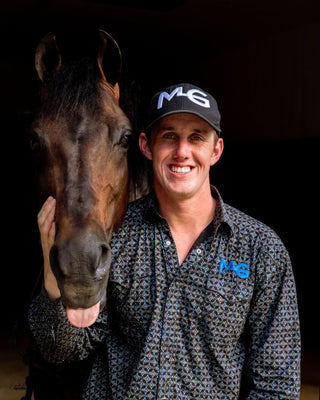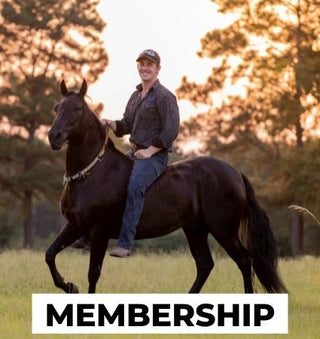Watch the Video Here or continue reading below!
When training a green horse, one of the biggest challenges is building speed while maintaining control and softness. A well-trained horse should be responsive, relaxed, and balanced at every gait. In this guide, we’ll cover effective techniques to help you safely and efficiently develop speed in your young horse while keeping them confident and willing.
Why Head Position Matters for Speed Development
One of the first steps in training a green horse for speed is ensuring proper head position. Many young horses naturally carry their heads high, which leads to stiffness and resistance.
- A high head position makes a horse stronger and more resistant.
- Lowering the hands while riding encourages the horse to soften and relax.
- A relaxed horse is more receptive to learning and forward motion.
The Importance of Hand Position
The way you hold your hands on the reins has a significant impact on how the horse carries its head.
- Keeping hands low (down by the thighs) signals the horse to lower its head.
- High hands (chest level) naturally encourage the horse to raise its head and resist.
- A horse with a relaxed frame is more willing to move forward without fighting the bit.
Training Example: The Power of a Simple Change
While working with a colt in Australia, a simple adjustment in rein positioning made a drastic difference. The horse had been trotting and cantering with its nose out and head up, making it resistant to cues. By lowering the hands significantly, the horse learned to drop its head naturally and respond with softness—without force or resistance.
Developing Responsiveness Before Increasing Speed
Before adding speed, ensure your horse is responsive to basic cues at a walk and trot. Your horse should be able to:
✅ Walk, trot, and canter without resistance.
✅ Flex laterally and give to the bit.
✅ Stop and turn with minimal pressure.
The Step-by-Step Process to Increase Speed
1. Start with a Solid Foundation
Your horse should understand leg pressure, rein cues, and forward motion before focusing on speed. If your horse is resistant at slower gaits, increasing speed will only create more problems.
- Use spiraling exercises to loosen up stiff sides.
- Work on transitions between gaits to develop control.
- Ensure the horse responds to light pressure before asking for more.
2. Introduce Speed Gradually
Once your horse is comfortable and responsive at slower gaits, gradually introduce more speed.
- Ask for a canter in short bursts and reward softness.
- Keep the horse’s head low and relaxed as speed increases.
- Use rollbacks and lateral work to keep the horse engaged.
3. Correct Resistance Immediately
If your horse resists at faster speeds (such as leaning into the bit or running through cues), correct the behavior immediately.
- Use rollback exercises to reinforce control.
- If the horse stiffens, spiral and back up until it softens.
- Keep working on the weaker side until it matches the better side.
Avoiding Common Mistakes When Building Speed
Many riders make the mistake of ignoring resistance in their horse’s movement. If your horse is pushing against the bit, ignoring your leg, or resisting turns, don’t rush to add speed.
🚫 Mistake #1: Allowing a Horse to Run Through Cues
Solution: Work on collection and control before increasing speed.
🚫 Mistake #2: Ignoring Stiffness in One Direction
Solution: Work the stiff side until it matches the soft side.
🚫 Mistake #3: Being Afraid to Use Pressure
Solution: Always start soft, but increase pressure as needed until the horse responds.
How to Know When Your Green Horse is Ready for More Speed
You’ll know your horse is ready when:
✅ The horse moves forward without resistance.
✅ Transitions between gaits are smooth.
✅ There is no difference in softness between left and right turns.
✅ The horse is willing and confident without rushing.
When all of these are in place, you can confidently add more speed while maintaining balance and control.
Final Thoughts
Building speed in a green horse takes patience, consistency, and proper technique. By focusing on head position, hand placement, and gradual speed increases, you’ll set your horse up for success.









